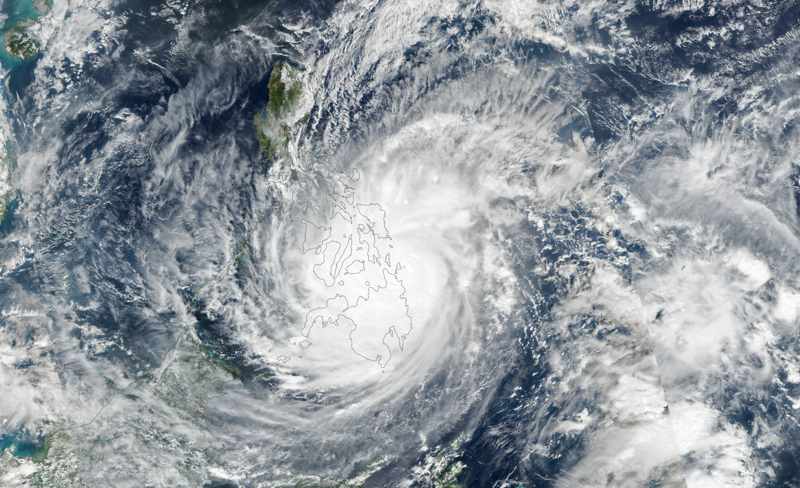The Philippines Government Treasury department has now issued a notice to the calculation agent requesting that an assessment be made as to whether recent super typhoon Rai (locally known as Odette) might have triggered its World Bank issued IBRD CAR 123-124 catastrophe bond coverage.
 The World Bank issued catastrophe bond provides the Philippines with $150 million of tropical cyclone disaster insurance protection on a modelled loss trigger basis through its Class B tranche of notes.
The World Bank issued catastrophe bond provides the Philippines with $150 million of tropical cyclone disaster insurance protection on a modelled loss trigger basis through its Class B tranche of notes.
As we reported yesterday, the Philippines had put the World Bank on notice for its catastrophe contingent line of credit, through the CAT-DDO instrument.
But at the time we hadn’t heard whether the catastrophe bond was officially on-watch, or not.
Now, sources have told us that the Bureau of the Treasury of the Republic of the Philippines has issued notice to the calculation agent AIR Worldwide, as it believes the impacts of super typhoon Rai (Odette) could be significant enough to trigger the cat bond notes.
The official event notice reads that the Government of the Philippines is notifying the calculation agent (AIR) of the occurrence of a catastrophe it believes has the potential to qualify under the terms of the catastrophe bond deal and its $150 million of Class B notes, typhoon Rai (locally known as Odette).
As a result, the government instructs the calculation agent to “make all relevant determinations, identifications, valuations and/or calculations, and give all relevant reports related to the Notes, in accordance with the Event Calculation Agent Agreement.”
As we reported when typhoon Rai was still approaching landfall, it can be challenging to understand whether this cat bond is truly exposed to any losses from a storm, as it features a complex modelled loss trigger.
We explained that, as typhoon Rai approached it did not look particularly likely to have the intensity, or travel over sufficient regions that hold the highest exposure values, to be able to meet the required trigger parameters.
There’s a lot of uncertainty in that statement, of course, as we are not privy to the necessary information to make any such calculation ourselves.
However, previously the Philippines government issued notice to the calculation agent for the cat bond after super typhoon Goni was thought to be an applicable event, so requiring a calculation of the modelled losses to be undertaken.
That typhoon did not trigger the Philippines cat bond notes and it was considered more intense than super typhoon Rai at landfall.
But landfall location and the track a typhoon follows across the Philippines is everything and typhoon Rai (Odette) has been very damaging and caused a significant death toll, so it is only right that a calculation process be requested in case the storm could get close to reaching the required modelled loss levels to trigger any payout for the Philippines recovery from the super typhoon.
For comparison though, Super typhoon Goni (also known as typhoon Rolly locally in the Philippines) intensity was upgraded by the JTWC just prior to landfall to 170 knots, which is close to 196 mph sustained winds, and based on recordings of 1-minute sustained winds, Goni was considered by some to be the strongest recorded tropical cyclone to ever make landfall anywhere in the world.
Typhoon Rai (Odette) came ashore with sustained winds around 110 knots, so was a significantly weaker storm, in terms of peak wind speeds. But Rai (Odette) continued to have very strong typhoon strength winds as it crossed the Philippines and has created a wide footprint of damage in its wake.
So, based on intensity it would seem unlikely Rai could get close to triggering the Philippines World Bank cat bond, as it was so much weaker than Goni. But, factors related to the track and path, plus the exposure values it crossed, all need to be taken into consideration in the event calculation process that will now run.
AIR Worldwide will now run its models and the calculation process, in order to analyse typhoon Rai’s passage across the Philippines and derive a modelled loss figure, based on pre-defined post-event loss calculation procedures for the tropical cyclone tranche of cat bond notes.
The modelled loss figure AIR comes up with will then need to be compared to the terms of the catastrophe bond, that define whether any payout could be due under the cat bonds Class B tropical cyclone coverage.
The $150 million of Class B tropical cyclone exposed cat bond notes are able to make a payout in increments of 0%, 35%, 70% or 100% of principal, dependent on how severe a qualifying loss event is and how high the resulting modelled loss is calculated to be.
With an event notice now officially submitted by the Philippines government, AIR will run this process and report back to the Bureau of the Treasury, as well as to the investors in the catastrophe bond.
We’ll update you as and when we hear any more on the Philippines catastrophe bond and whether typhoon Rai (Odette) has triggered any payout of investor principal.
You can read all about the landmark Philippines catastrophe bond, the IBRD CAR 123-124 issuance, in our comprehensive catastrophe bond Deal Directory that includes details on more than 800 transactions.
 View all of our Artemis Live video interviews and subscribe to our podcast.
View all of our Artemis Live video interviews and subscribe to our podcast.
All of our Artemis Live insurance-linked securities (ILS), catastrophe bonds and reinsurance video content and video interviews can be accessed online.
Our Artemis Live podcast can be subscribed to using the typical podcast services providers, including Apple, Google, Spotify and more.































